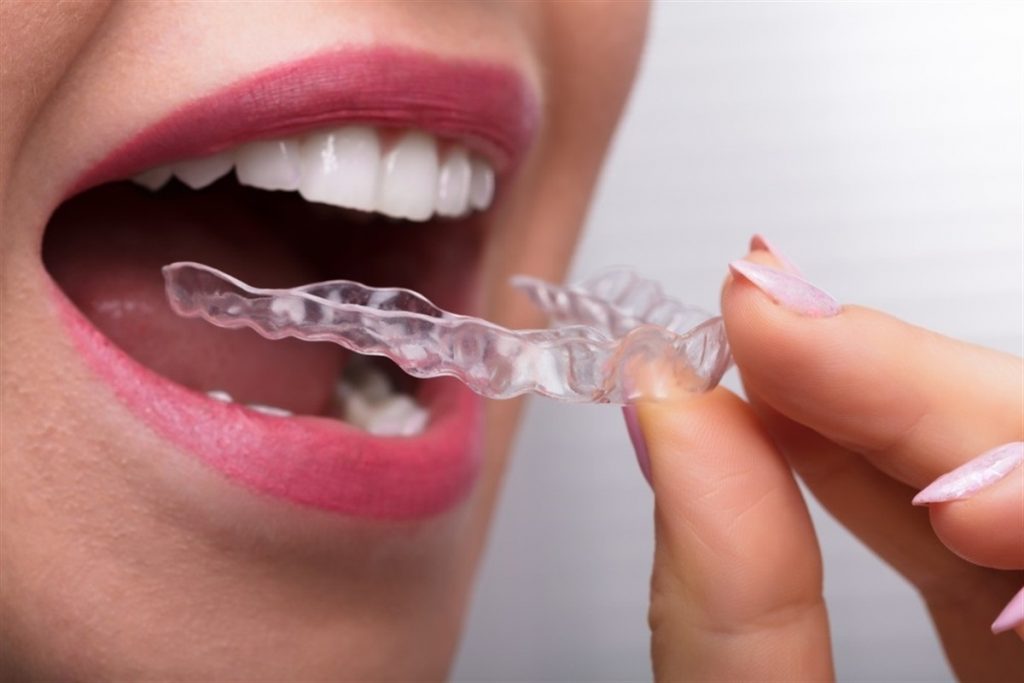
Invisalign has become a preferred alternative to traditional braces, giving people the option to align their teeth with clear, removable trays instead of metal brackets and wires. But how long does Invisalign take to work? The answer depends on various factors, including the severity of the alignment issue, your daily wear time, and a few other important considerations.
On average, Invisalign treatment ranges from 6 to 18 months, with some cases requiring more time based on specific dental needs. This section will break down the basics of the Invisalign process and offer a look at common timelines so you can get a better sense of what to expect.
Understanding the Invisalign Process
What Is Invisalign and How It Works

Invisalign is a system of clear, custom-made aligners that gradually shift teeth into place. Unlike traditional braces, which rely on fixed metal brackets and wires, Invisalign uses a series of trays molded specifically for your teeth at each stage. Every aligner in the series applies precise pressure to guide your teeth into alignment.
Some of the key benefits of Invisalign include:
- Clear appearance: The aligners are almost invisible, making them a discreet option.
- Removability: You can remove the trays to eat, brush, and floss, which often makes daily life easier.
- Less office time: Follow-up appointments are usually shorter since there’s no need for adjustments like in traditional braces.
How long does Invisalign take to work?
Invisalign treatment times vary based on the complexity of the alignment issues being addressed. Here’s a quick look at typical timelines for different case types:
- Mild cases (6-9 months): People with minor spacing or alignment issues often see results in under a year.
- Moderate cases (9-12 months): Cases that involve slightly more complex corrections, like moderate crowding or mild bite issues, generally take about a year.
- Complex cases (12-24 months): For more significant misalignments or bite adjustments, the treatment may extend up to two years.
Invisalign is designed to provide flexible yet effective treatment times based on individual needs. It’s not uncommon for results to appear sooner or to require a few additional months for more precise alignment.
Factors Influencing Invisalign Treatment Time
How long does Invisalign take to work? The time it takes for Invisalign to work isn’t just a one-size-fits-all answer. Various factors can impact the length of treatment, some of which are under your control. Here’s what can affect your timeline:
1. Type and Complexity of Dental Issue
The type and severity of the alignment issue play a major role in determining how long Invisalign takes. Simple cases, like minimal spacing or slight crowding, typically take less time, while complex corrections, such as an overbite or severe crowding, often require longer treatment.
2. Patient’s Age
How long does Invisalign take to work based on age? Younger patients may experience faster results due to ongoing dental and jaw development, which makes teeth easier to move. For adults, the timeline may be slightly longer since teeth tend to be more firmly set.
3. Daily Wear Time
The effectiveness of Invisalign largely depends on wearing the aligners for the recommended 20-22 hours per day. Consistent wear is essential; removing the aligners too often can slow progress and extend treatment time.
4. Adherence to the Aligner Schedule
Switching aligners on time is a crucial part of staying on track. Dentists often recommend changing aligners every 1-2 weeks, but this can vary. How long does Invisalign take to work when you’re a responsible patient? The answer is that it will likely finish as planned. Sticking closely to the prescribed schedule helps ensure steady progress.
5. Additional Treatments (if necessary)
How long does Invisalign take to work if other treatments are required? In some cases, extra elements like attachments (small tooth-colored dots applied to the teeth to help direct force) or rubber bands may be needed. These additions can help achieve precise movements but may add a few months to the overall treatment duration, depending on individual requirements.
Comparing Invisalign Treatment Time to Traditional Braces
Invisalign and traditional braces are both effective options for straightening teeth, but they differ significantly in terms of treatment time. Understanding these differences can help you determine which option is the better fit for your needs.
Quick Overview of Average Treatment Times
- Invisalign: Typically 6 to 18 months, depending on the complexity of the case and adherence to wearing the aligners as directed.
- Traditional Braces: Usually 18 to 24 months or even longer for complex cases.
These timelines can vary based on individual circumstances, but Invisalign tends to offer faster results for cases that don’t require highly complex corrections.
Factors That Make Invisalign Faster (or Slower)
While Invisalign can be quicker for some, there are specific aspects of each treatment that can impact the overall length.
- Removability of Aligners: Invisalign’s removable nature often makes it easier for people to maintain their normal brushing and flossing routines, which can help avoid treatment delays due to dental issues like cavities or gum inflammation. On the other hand, not wearing the aligners as prescribed can slow down progress.
- Complexity of the Case: Braces may be a better option for highly complex cases that require rotations or vertical movements, which Invisalign can’t always achieve as efficiently. In these cases, braces might provide a more comprehensive result, but it could take longer to reach it.
- Frequency of Check-Ups: With Invisalign, you typically switch aligners at home every 1-2 weeks and have fewer in-office visits. Braces require more frequent in-office adjustments, which can add time if scheduling appointments becomes an issue.
Tips to Stay on Track with Invisalign Treatment
Sticking to your Invisalign plan is essential to achieving results within the estimated timeline. How long does Invisalign take to work? Here are some practical tips to help you stay on track, so your treatment runs smoothly and efficiently.
1. Follow the Recommended Wear Time
Invisalign aligners are most effective when worn for 20-22 hours each day. Aim to remove them only for eating, drinking (anything besides water), and brushing.
Consider setting reminders on your phone or using an aligner case to keep them close by to help you remember to put them back in after meals.
2. Keep Up with Dental Check-Ups and Progress Scans
Regular check-ups ensure your treatment is progressing as planned. These visits allow your dentist to assess your teeth’s movement and give you the next set of aligners on time.
Many Invisalign providers now offer virtual progress scans, allowing you to check in without an in-office visit. Ask your provider if this is available to save time.
3. Maintain Good Oral Hygiene
Since Invisalign trays fit snugly over your teeth, food particles or plaque can become trapped, leading to issues like tooth decay or gum irritation that can delay treatment.
To avoid these complications, make sure to brush and floss after every meal before reinserting your aligners. Regular cleanings with your dentist also help keep your teeth and gums healthy.
4. Use a Dedicated Aligner Tracking App
Many aligner tracking apps allow you to log your wear time and even send reminders if you take them out. Apps like TrayMinder are designed specifically for Invisalign users and can help you track how many hours you wear the aligners each day.
Tracking your progress can help keep you motivated, as you’ll be able to see how consistent wear adds up over time.
What Happens After Invisalign Treatment?
Once you’ve completed the final stage of your Invisalign treatment, the journey to maintaining your new smile begins. Here’s what to expect and how to keep your teeth in their new, aligned positions.
1. Wearing Retainers
After Invisalign treatment, retainers are essential to prevent your teeth from shifting back. Teeth can naturally try to return to their original positions, especially soon after treatment ends.
Retainers are custom-made for your smile, just like your Invisalign aligners. Your dentist will likely recommend wearing them full-time initially, gradually transitioning to wearing them only at night as your teeth settle.
2. Retainer Types and Options
- Clear Retainers: Clear plastic retainers resemble Invisalign aligners and are nearly invisible. They’re popular for their appearance but may need replacement every few years due to wear.
- Fixed Retainers: These are thin wires bonded behind your front teeth, providing continuous support without needing daily removal. Fixed retainers are ideal for people who want a low-maintenance option, though they require diligent oral hygiene to prevent plaque buildup.
- Hawley Retainers: Made from acrylic and wire, these retainers are durable and adjustable but more noticeable than clear options. Some patients prefer these for their longevity.
3. Retainer Maintenance and Care
Keeping your retainers clean and in good condition is crucial for maintaining oral health and ensuring they last. Follow these tips:
- Rinse and Brush Daily: Use water and a soft toothbrush to gently clean your retainer every day. Avoid toothpaste, as it can scratch clear retainers.
- Deep Clean Weekly: Use a retainer cleaner or mild soap once a week to remove any buildup or odor.
- Store Properly: Always keep your retainers in a protective case when they’re not in use to prevent damage or loss.
4. Follow-Up Visits
Periodic check-ups after Invisalign treatment help ensure your teeth remain in their new positions and your retainers fit comfortably. Most dentists recommend a follow-up a few months after treatment completion, with annual visits to monitor long-term results.
If you experience any discomfort with your retainers or notice shifting, contact your provider for an adjustment.
Get Started on Your Invisalign Journey with Dr. Scantlebury
At Scantlebury Orthodontics in Brooklyn, NY, Dr. Sophia Scantlebury provides expert care and personal attention to each patient. Dr. Scantlebury’s extensive background makes her one of the most trusted orthodontists in the community.
Why Choose Scantlebury Orthodontics?

-
Customized Invisalign Treatment: Dr. Scantlebury and her team use advanced technology to create personalized Invisalign aligners that fit your unique dental needs.
- Friendly, Comfortable Environment: Patients of all ages rave about Dr. Scantlebury’s gentle care and the welcoming atmosphere of the practice.
- Comprehensive Orthodontic Solutions: From Invisalign and Invisalign Teen to accelerated treatments like PROPEL VPro5, Scantlebury Orthodontics offers options designed to suit every lifestyle.
How long does Invisalign take to work? Schedule a consultation with Dr. Scantlebury and see how Invisalign can give you the smile you’ve always wanted.
